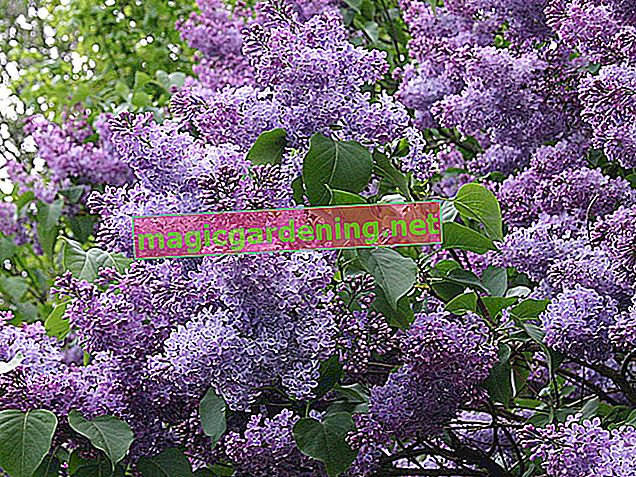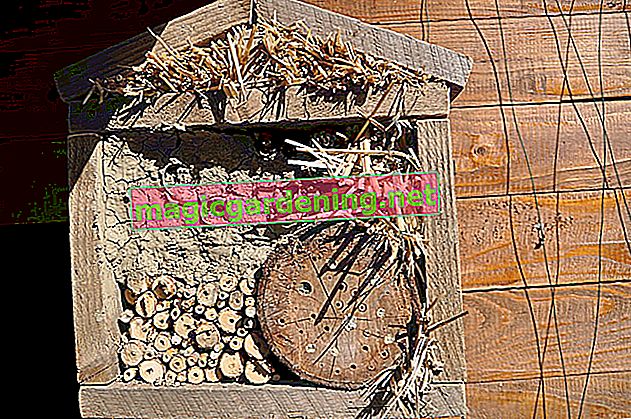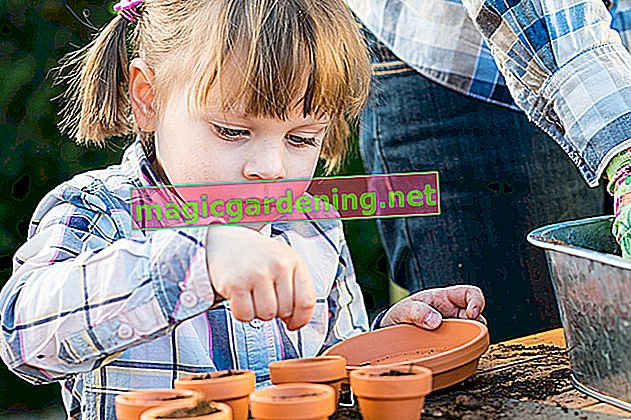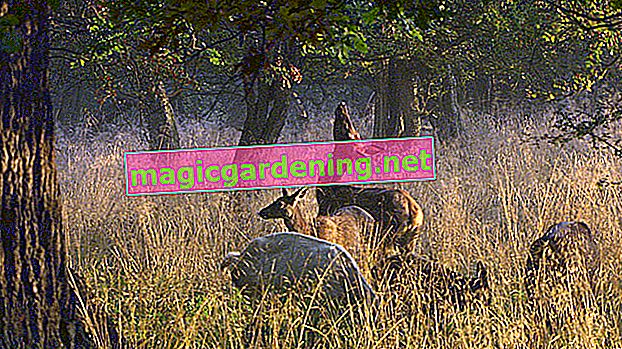
Plant the cockade flower correctly
The extract of the ice saints marks the beginning of the planting time for the cockade flower. In the sunny location, dig small plant pits in the loose, sandy soil with 1.5 times the volume of the root ball. A planting distance of 35-40 cm is considered appropriate. You create a picturesque appearance if you arrange the perennials in small tuffs with 10-20 specimens. In each pit you place a flower as deep in the earth as you did in the seed pot. The addition of compost and horn shavings (€ 6.39 at Amazon *) creates ideal starting conditions for a blooming season. No less important is a sufficient supply of irrigation water on the day of planting and in the following period.
also read
- Is the cockade flower hardy?
- How is the cockade flower cut?
- Sowing the cockade flower - this is how it works
Care tips
In contrast to the spirited appearance in the bed and tub, the cockade flower is reserved in terms of care. How to properly treat the painter's flower:
- Water moderately when dry
- Pamper yourself with compost or liquid fertilizer every 2-3 weeks from May to September
- Clean up withered flower heads as soon as possible
- At the beginning of September cut the perennial close to the ground and cover with leaves
Please do not underestimate the time of pruning in autumn. If this happens too late, a Gaillardia lacks enough time to produce the vital winter shoots.
Continue reading
Which location is suitable?
The painter's flower achieves its optimum in a sunny, warm and sheltered location. While the towering varieties do not like a windy location at all, the stable 'Kobold' or the dainty 'Bijou' may like a place in the sun bathed in air.
What soil does the plant need?
You set the course on a flowery course when you settle the cockade flower in loose, humus and sandy-loamy soil. In view of this requirement, it is hardly surprising that the perennial feels extremely comfortable in the rock garden or steppe bed. Corresponding to this, potting soil, leaned with sand or fine grit, is shortlisted, ideally enriched with lava granulate (€ 10.95 at Amazon *) or perlite (€ 32.90 at Amazon *) respiratory flakes.
When is the flowering time?
From June to September the cockade flower strikes its floral wheels of fire in the bed and on the balcony. Since a single flower does not have this stamina, you should clean out wilted basket flowers regularly. In this way, the well-groomed appearance is retained and the flowering period extends into autumn.
Cut the cockade flower correctly
The experienced hobby gardener always has the secateurs close at hand when he pays a visit to his cockade flowers. On these occasions, the picturesque summer flower is cut:
- As a vase jewelry in the morning, when the flowers have just opened
- Pruning dead flowers to make room for re-blooming
- Cut back close to the ground in early / mid-September
The last cut is also one of the most important maintenance measures. In this way, you encourage a Gaillardia to replanting before winter. Without this tuft of leaves, the flower will not get through the cold season unscathed.
Continue reading
Water the cockade flower
Water a cockade flower only moderately. When in doubt, the summer beauty would prefer to stand dry for a short time rather than deal with waterlogged. Only pour the water slowly onto the root ball in order to recognize in good time when no more moisture is absorbed. You can tell when the first drops run into the coaster from potted flowers.
Fertilize the cockade flower properly
In the bed, the cockade flower gratefully accepts a portion of compost with horn shavings every 3-4 weeks. The application of fertilizer ends with the pruning before winter. The same applies to potted flowers. From May to September, apply a liquid fertilizer for flowering plants every 2 weeks. In winter quarters there is no nutrient supply between October and April.
Overwinter
The key to successful wintering is the sharp pruning in autumn at the right time. In the beginning / middle of September, cut back the cockade flower close to the ground. The perennial then grows anew by forming the vital overwintering shoots. If this date for the cut is missed, the chances of survival of a Gaillardia drop dramatically. In addition, we recommend covering with leaves or straw to protect against permanent wetness and freezing cold. Please move pots with a diameter of less than 30 cm to the frost-free winter quarters. Larger planters have a winter coat made of fleece, jute or bubble wrap and a warm wooden base.
Propagate the cockade flower
If you are aiming for a single variety, the division of the root ball comes into focus. The best time to do this is in spring, when the soil is completely thawed. However, if you are planning a larger number of cockade flowers, sowing the seeds makes more sense. Certified seeds from specialist retailers ensure which attributes the flowers have. Sown on peat sand, just press the light germs and shower them with soft water. After 10-14 days at a constant 20 degrees Celsius, the first germinal lamellae appear. For further care, place the seedlings a little cooler at 16-18 degrees Celsius. Until the middle of May you will have numerous vital cockade flowers in your hands, strong enough to plant out.
How do I transplant properly?
Pick up the root ball every 3-4 years to replant after dividing it. This measure contributes significantly to the fact that the cockade flower remains as a perennial for a long time. A suitable date is in spring, as soon as there is no more ground frost threat. Cut the plant in two or more parts. Each segment with 2-3 eyes has the potential to become an adult painter's flower.
Cockade flower in the pot
In the pot and balcony box, the painter's flowers spray their colorful fireworks in a sunny, warm and sheltered location. Fill in loose potting soil, enriched with quartz sand and perlite, over a water-bearing layer of pebbles or potsherds. The planting depth in the cultivation container should be maintained as far as possible. Water the painter's flower only moderately. From May to September, pamper the fiery beauty of the flowers with liquid fertilizer every 2 weeks. At the beginning of September, cut the perennial close to the ground to move them to frost-free winter quarters.
Nice varieties
- Burgundy: Magnificent cockade flower that sets colorful eye-catchers with its deep red flower wheels; 50-60 cm
- Tokaj: Majestic painter's flower with orange flowers, ideally suited as a backdrop plant in the perennial bed; 70-80 cm
- Kobold: A stable variety with red, yellow tapering ray-flowers for beds and balconies; 30-40 cm
- Arizona Sun: beautiful and colorful, like a sunset; Gold medal variety from 2006; 20-30 cm
- Amber Wheels: predominantly yellow blooming Gaillardia that shines in competition with the sun; 60-70 cm
- Bijou: The smallest jewel among the cockade flowers, with half-double flowers in red, yellow and scarlet; 25 cm
´








